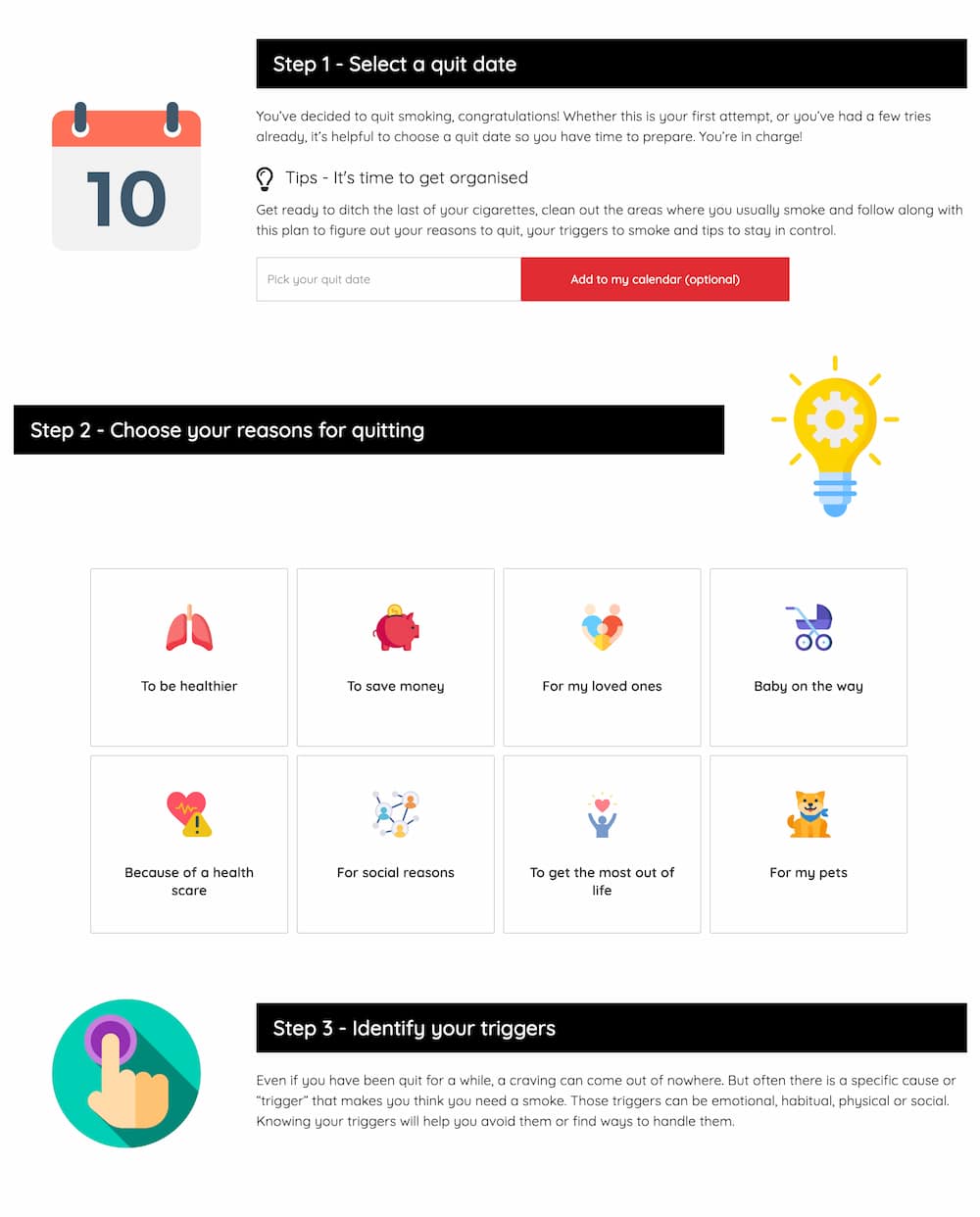Understanding withdrawal symptoms
Nicotine is an addictive chemical found in tobacco products. It only takes a few cigarettes to start building a tolerance, followed by dependence on nicotine. When your body gets low on nicotine you may experience withdrawal symptoms.
Withdrawal symptoms can start just a couple of hours after your last cigarette and may include restlessness, irritability, anxiety and stress, cravings, trouble concentrating, low mood and trouble sleeping.
Think of the above as recovery symptoms. They are the first signs that your body is beginning to heal itself from the damage caused by smoking.
Symptoms are likely to rise and fall over several weeks, so it's important to plan ways to manage nicotine withdrawal and remember all the reasons why you want to quit for good.
Try the 4Ds

DELAYING
Delay for 1-2 minutes and the urge will pass

DRINKING WATER
Sip it slowly

DEEP BREATHING
Take three slow, deep breaths of fresh air


.webp)





.jpg)
.jpg)
.jpg)
.jpg)






